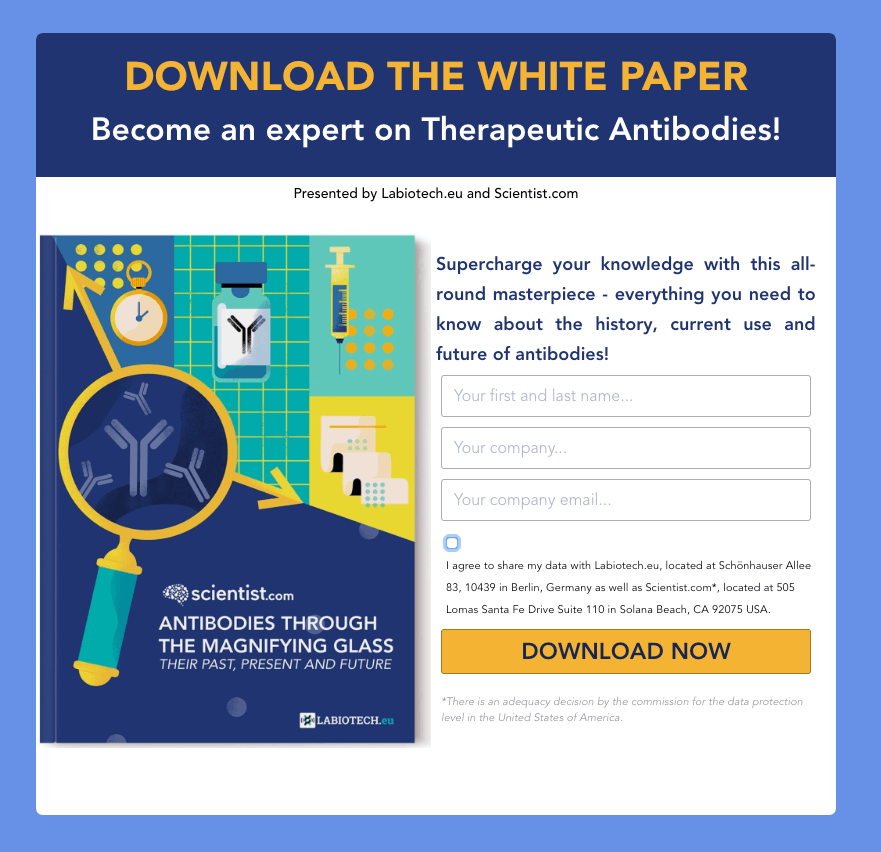The life science sector is full of ambitious professionals who are both overwhelmingly busy and voracious learners.
This presents a problem and an opportunity. If you can employ educational marketing to your market, leaving your readers significantly more informed on an important issue than before they found you, you can position yourself as a valued authority. However, you’ll need to communicate the benefit of your material properly before anyone decides to spend their precious time reading it.
Get these two things right – good promotion of a good material – and you could find yourself with more leads than your sales team can make full use of. This is what we call the White Paper Funnel.
The promotion side of the equation involves driving “traffic” (online visitors) to a high-converting landing page that clearly communicates the value of an excellent white paper and offers it in exchange for contact information. We’ll get to that soon but first, let’s start with the fundamentals of white papers and how to make them compelling.
White Paper Fundamentals
What is a white paper, what isn’t it, and what makes it a worthwhile read?
White papers are long-form educational content used to present a complex problem and its likely solutions or to keep the reader informed on specialized market or technological trends. You’ll often find them in PDF format, anywhere from 5 to 30+ pages in length.
The kinds of questions they address can range from how to select the best microscope for your lab to what important developments are emerging in cancer diagnostics.
When you’re using a white paper as a marketing device, refrain from trying to sell your solution in the paper itself. Smart people are naturally skeptical of a company’s claims about its own product.
The good news is, your readers will create their own bias toward your product or service after finding themselves genuinely informed by material you publish. Why? Because of the explainer-assumption. Someone who can explain a problem better than you will naturally seem able to solve it.
Demonstrating an exhaustive understanding of a problem is how white papers convert prospects to customers without “selling” to them.
How Much Should You Invest in Your White Paper Funnel?
Why put money behind a white paper funnel when there are so many methods of digital marketing to choose from?
What about SEO, guest blogging, forum discussions, Linkedin advertising, or offline methods such as networking or speaking at conventions?
The truth is, all the methods described above feed into your funnel.
No matter how your company gets attention, you need a way to collect their information and demonstrate your expertise if you hope to convert that attention into revenue. There are few better ways to do this than to collect their email address in exchange for a white paper that leaves them feeling informed and impressed, and to nurture them as mailing list subscribers into the future (and as we wrote in our top 7 life science marketing trends, email marketing is still effective).
Your lead generation mechanism (whether it’s using a white paper, a free or discounted consultation, or merely swapping business cards) is the keystone of your sales numbers. Once you have a great white paper that your target customers want to read and a landing page that gets proven results in conversions, then any investment in driving traffic will only multiply the results of your funnel.
Remember these 5 Essentials to a High-Converting Landing Page
A great white paper is only half the funnel. The next is communicating its value well enough that your target readers will feel compelled to pick it up when they find themselves on your landing page.
A landing page needs at least the following five essential aspects to be effective.
1. A Headline that Communicates the Most Appealing Benefit of Reading Your White Paper
Your headline can make or break the success of your landing page. It’s sometimes worth spending as much time working on the headline as the rest of the copy.
In order to make a killer headline, you need to know the primary appeal that would draw people to read your white paper. What problem does it solve, exactly? What benefit, emotional and/or practical, does it provide? Convey that benefit in the headline succinctly and you should have a winner.
Note: I often see companies copy/pasting the title of their white papers as the landing page headline. This is a waste of prime real-estate on the page. Take this example from one of our campaigns below. We created a white paper called “Antibodies through the magnifying glass” for our client Scientist.com, whereas the headline of the landing page is “Become an expert on Therapeutic Antibodies”. This last sentence shares the real value of the white paper while the title of the white paper is more abstract.
2. Images that Show What the Reader Will Get After Signing Up
Displaying the front cover of your white paper is a simple conversion-boost that businesses all too often overlook. The ability to see what you’ll get by signing up puts you at ease, even if no extra information in technically shown in that image.
You might also consider displaying a sample page from within the white paper (preferably a visually attractive one) to further raise the reader’s trust in what they’ll get in exchange for the permission to contact them. Don’t worry about giving too much away. If people like what they see, they’ll want to read the rest of the paper.
3. Crystal-Clear Instructions (Even When You Think it’s Obvious)
Tell the visitor exactly what to do and what will happen when they do it.
“Fill out the form and your link to download this report will be sent to your inbox in a matter of seconds.”
Although might seem obvious and unnecessary to say, this kind of simple instruction and promise will earn you more leads.
4. Reassurances to any Objections the Reader Has
“I don’t have time to read this.”
“I’ll get hounded by sales reps if I give my email.”
“How do I know the information here is worth my time?”
For a white paper landing page, you don’t need to go into as much depth when addressing the reader’s objections as you would with a sales page. Even still, write down as many as you can think of and have that list handy when you’re writing your copy. See how many you can address.
5. Focus their Eye on the Goal
Give visitors no more or less than two exit routes, ideally. One to go to the home page (or back to the page they were just on), and one through the sign-up form.
It’s inadvisable to remove all alternative exit routes (i.e. back to the homepage). That’s a good way to make someone feel trapped and leave a bad taste in their mouth as they close your page.
Conversely, you’ll take a chunk out of your conversion rates if you include a litany of ways to leave the page without downloading the white paper. Keep them on-point and don’t distract them.
6. Proof of Credibility (Bonus)
If you have worked with some well-known brands in the past, put their badges on the page to lend credibility. A very short testimonial about your company may also work here, but be cautious. Putting a glowing testimonial about your service will only convince the visitor that your “white paper” will be nothing more than a 15-page promotional pamphlet.
How to Create a Landing Page Without the Need for a Developer
You can find many landing page software tools on the market today that make the technical side of landing page creation easy for non-developers.
Three options who offer their software for less than $200 a month (excluding enterprise options) are LeadPages, Instapages, and Unbounce. They all offer free trials, so you can take each of them for a spin before deciding if you have the time.
If you’re looking for a heavy-hitter, consider Hubspot. It requires a large investment and has the feature list to back up the price tag. Making full use of Hubspot’s features is a full-time job, however, so only consider it if you have a marketing team on hand full of fast learners.
Another solution is to outsource your white paper marketing. For example, we offer an all-in-one package. We’ll create the white paper, design and set up your landing page, and deliver your leads in a neat list to go straight into your sales pipeline. Get in touch for more information.
How to Maximise Lead Conversions without Harming Your Brand Reputation in the Long-Term
Short-term gain vs long-term benefit is a balance every company must struggle with. In the life sciences, it is particularly important to protect your brand reputation. Professionals within your sector have high expectations of both quality and professional honesty. You’ll do better in the long run (and perhaps even in the short run) by refraining from using short-sighted “sales tactics”.
However, that doesn’t mean you have to settle for mediocre gains in the short-term. You must only refrain from suggesting your solution is the only viable one on the market (unless, of course, it truly is).
Bring to your white paper funnel the mindset that there is plenty of room in your market for all the competition there is, and all you need to do is present the problem better than anyone else and offer your solution clearly and honestly. If your readers can sense a fair and unbiased attitude behind your content, they will begin to trust you enough to take the risk of investing in what you offer.






